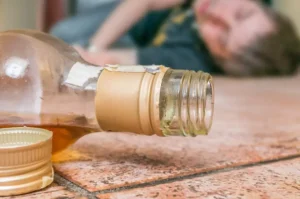
Any third party contributor to any such profile, article or video has been compensated by SeniorLiving.org for such contribution. It is advised that you conduct your own investigation as to the accuracy of any information contained herein as such information, including without limitation any medical advice, is provided “as is” for informational purposes only. Further, SeniorLiving.org shall not be liable for any informational error or for any action taken in reliance on information contained herein.

Statistics on Alcohol Abuse and Alcoholism in the US
As people age, their bodies undergo changes that can affect their physical and mental health. Blood flow can decrease, and relationships between neurons can change, https://ecosoberhouse.com/ influencing cognitive function. Some experience a decrease in serotonin and dopamine, neurotransmitters responsible for regulating moods and emotions.
Positive Results

Use screening and assessment tools that have been well researched and approved for use with older adults. Explain what will take place during and after the substance abuse in older adults screening and assessment so that the individual knows what to expect. Living in the home with someone who misuses substances or has a mental disorder.
- Although rare, age-specific treatment settings and programs may provide the most effective care for older clients.
- Substance use disorders are characterized by intense, uncontrollable cravings for drugs and compulsive drug-seeking behaviors – even in the face of devastating consequences.
- It will also help you understand the approach and services the program offers so you can appropriately refer future clients there.
Opioid Pain Medicines
Chronic pain is a common issue among senior citizens and can seriously impact their overall quality of life. This trend concerns family members of older Americans, as well as healthcare providers and social workers who work with this vulnerable population. It’s essential to understand why seniors are increasingly suffering from addiction so we can better prevent it in older adults.
- Drugs can worsen these conditions, exacerbating the negative health consequences of substance use.
- This will give you a more complete picture of your clients’ substance-related issues and will help you understand how substance misuse affects them.
- Some health experts have called older adults who misuse substances an “invisible” population.307,308 Although older adults have frequent medical visits, behavioral health or healthcare providers often do not recognize substance misuse in their older clients.
- If no one in your program has the required qualifications, refer the client to another program that does.
Social Factors
Also, the percent of their body weight composed of water decreases, and alcohol affects them more quickly and more strongly. Alcohol takes longer to metabolize in older persons, accumulating in their bodies and leading more quickly to intoxication if consumption is not controlled. Because of their physical make-up, older women are more vulnerable to the negative effects of alcohol. Hand-in-hand with prescription drug misuse is the prevalence of chronic pain in aging populations.
Treatment Planning, Referrals, and Treatments
Substance abuse overall may increase the risk of fractures secondary to recurrent falls, memory loss, sleep disturbances, anxiety, and depression. In this article, we will review the signs and symptoms, risk factors, screening tools, Diagnostic and Statistical Manual of Mental Disorders, Fifth Edition (DSM-5) diagnostic criteria, and challenges of treating substance abuse in the older adults. A well-thought-out approach to comprehensive screening and assessment will help you identify older adults with or at risk for substance misuse and related conditions.
Drugs can worsen these conditions, exacerbating the negative health consequences of substance use. Additionally, the effects of some drugs—like impaired judgment, coordination, or reaction time—can result in accidents, such as falls and motor vehicle crashes. These sorts of injuries can pose a greater risk to health than in younger adults and coincide with a possible longer recovery time. Promising interventions include mandatory reporting of abuse, self-help groups, helplines and emergency shelters, psychological programmes for abusers, training of health care providers and other caregiver support interventions. Supporting the Mental Health Needs of Older Adults – State TA Brief Reference Document (1.7 MB)This concise reference document highlights evidence-based practices (EBPs) that have proven effective in addressing mental health challenges faced by older adults.

INTERVENTIONS
- Some experience a decrease in serotonin and dopamine, neurotransmitters responsible for regulating moods and emotions.
- A .gov website belongs to an official government organization in the United States.
- Example interventions include befriending initiatives, community and support groups, social skills training, creative arts groups, leisure and education services and volunteering programmes.
- This article will explore the prevalence, economic costs, and trends of alcohol abuse and alcoholism in the United States.
- The fourth section describes how to fully assess older adults who screen positive for moderate-to-severe substance misuse.
Many tools described here were developed specifically for older adults. Some are self-report tools (i.e., clients complete the tools themselves); a behavioral health service provider must deliver others. Older clients may have limited vision or difficulty writing and may need help completing screens. Some health experts have called older adults who misuse substances an “invisible” population.307,308 Although older adults have frequent medical visits, behavioral health or healthcare providers often do not recognize substance misuse in their older clients. Most brief interventions are described as using aspects of motivational interviewing (MI)118 or motivational enhancement therapy (MET),119 which encourages a client-centered, nonjudgmental approach to discussing substance use and encouraging positive, healthy changes to the individual’s life.
In recent years, the number of senior citizens seeking addiction treatment in the United States has skyrocketed. The number of adults aged 55 and over who sought out addiction treatments increased by more than 50 percent between 2009 and 2020. This alarming statistic shows that substance use disorders do not discriminate and can affect any population, including older adults.
